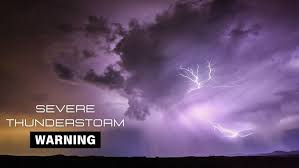Understanding Severe Thunderstorm Warnings: What You Need to Know

Introduction
Severe thunderstorm warnings are critical alerts issued by meteorological agencies to inform the public about impending thunderstorms that can pose serious threats. With the increasing frequency of extreme weather events, understanding these warnings has become vital for safety and preparedness. These storms can bring heavy rain, hail, strong winds, and even tornadoes, often leading to property damage, power outages, and in severe cases, loss of life. With climate change contributing to more volatile weather patterns, recognizing and responding to these warnings is more crucial than ever.
What Triggers a Severe Thunderstorm Warning?
Severe thunderstorm warnings are typically issued by Environment Canada when conditions are favorable for the development of severe thunderstorms capable of producing damaging winds exceeding 90 km/h, large hail (greater than 2 cm in diameter), or tornadoes. Meteorologists analyze real-time data from weather radars, satellite imagery, and weather models to assess the potential severity of storms. In recent weeks, multiple regions across Canada, including Ontario and British Columbia, have experienced severe thunderstorms, prompting alerts to residents.
Recent Events
In July 2023, Ontario faced a series of severe thunderstorms that resulted in significant damages. Wind gusts of up to 100 km/h were reported, uprooting trees and causing widespread power outages affecting thousands of households. Emergency services responded to numerous incidents involving downed power lines and damaged properties. In British Columbia, similar thunderstorms led to flash flooding, underscoring the importance of heedful action during such warnings. Residents were urged to stay indoors, avoid unnecessary travel, and prepare for the possibility of power outages.
Safety Measures
When a severe thunderstorm warning is issued, it is essential to take appropriate safety measures:
- Stay indoors and away from windows.
- Secure outdoor items that could become projectiles in high winds.
- Keeps an emergency kit ready, including water, non-perishable food, a flashlight, and a first-aid kit.
- Monitor updates through local news, official weather channels, or weather apps.
- If you are in a mobile home or temporary structure, seek shelter in a more secure building.
Conclusion
Severe thunderstorm warnings play a crucial role in public safety during adverse weather conditions. As climate change continues to influence weather patterns, residents should remain vigilant and informed about their local forecasts. Understanding the significance of these warnings can mean the difference between safety and disaster. By taking proactive measures during severe weather alerts, individuals can better protect themselves and their communities. Staying informed and prepared not only contributes to personal safety but also enhances community resilience in the face of extreme weather events.







